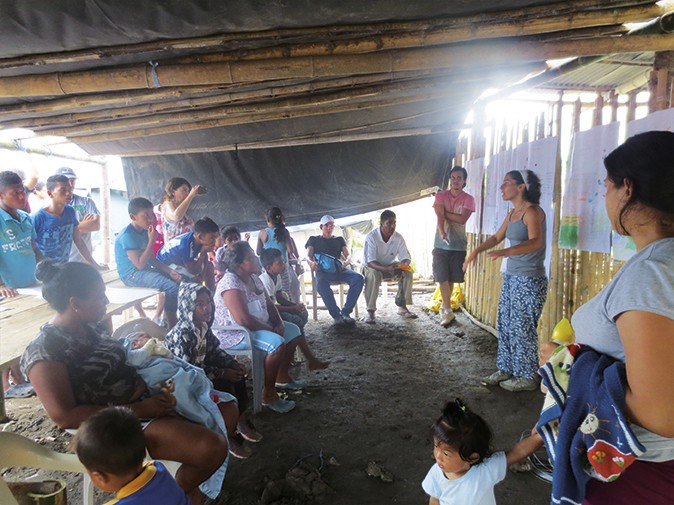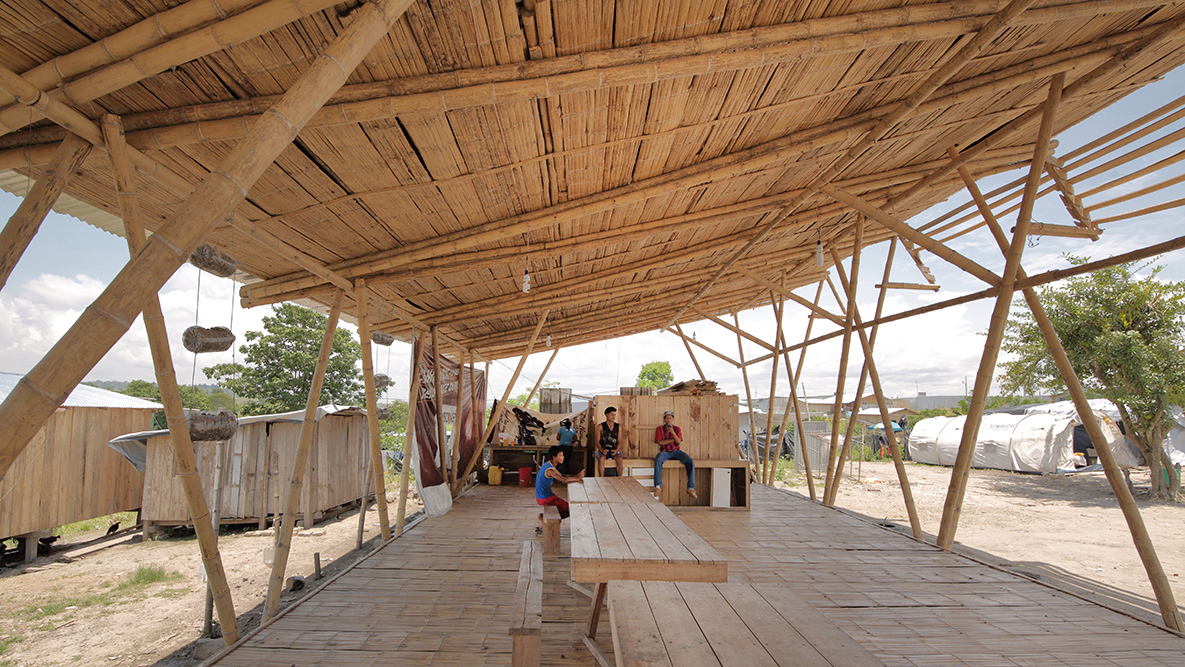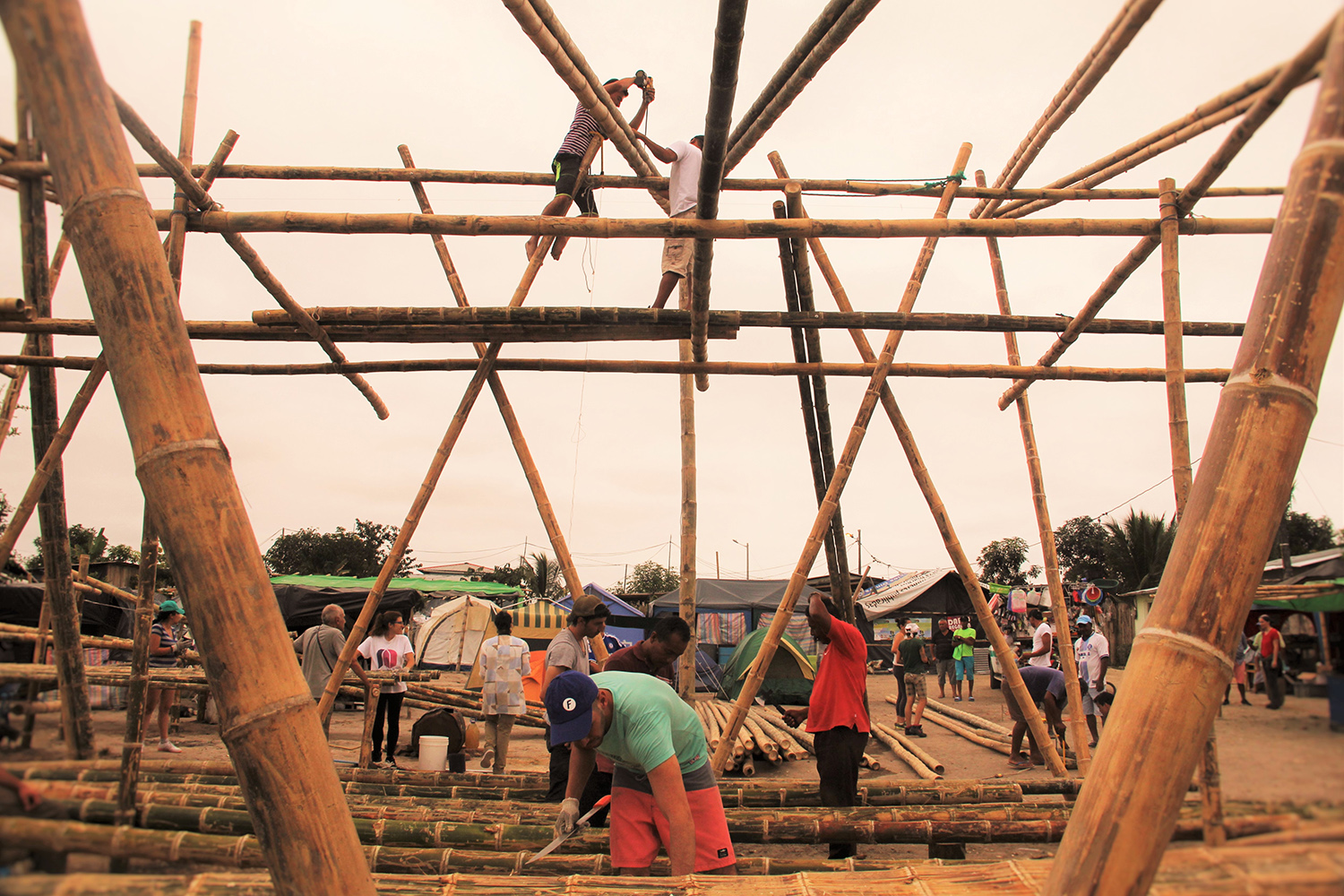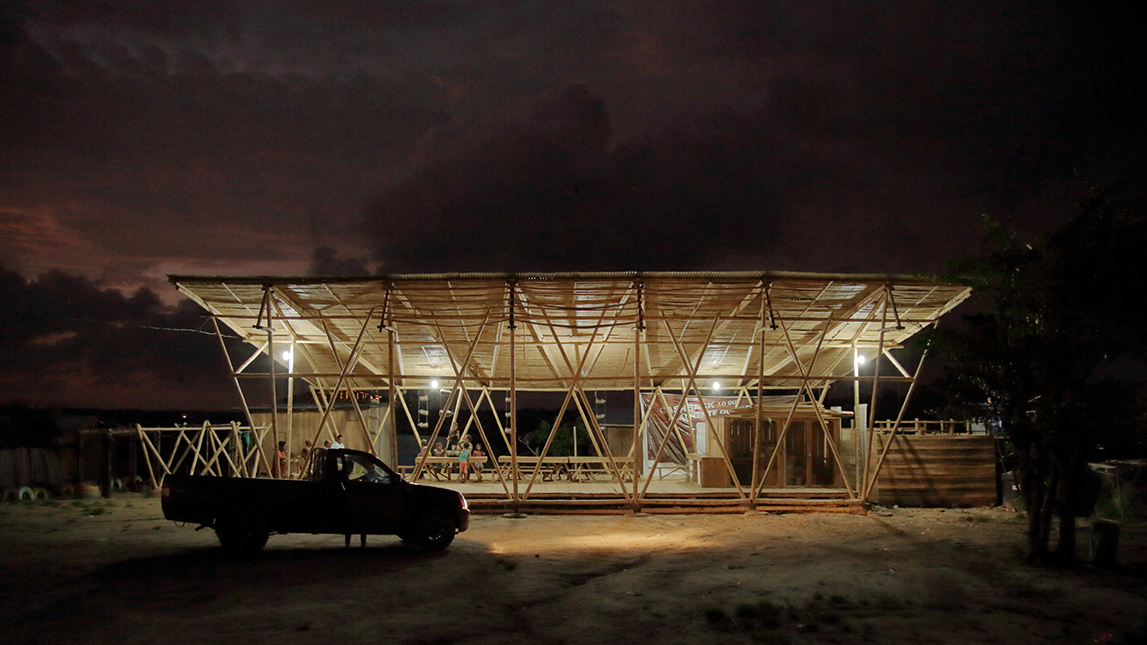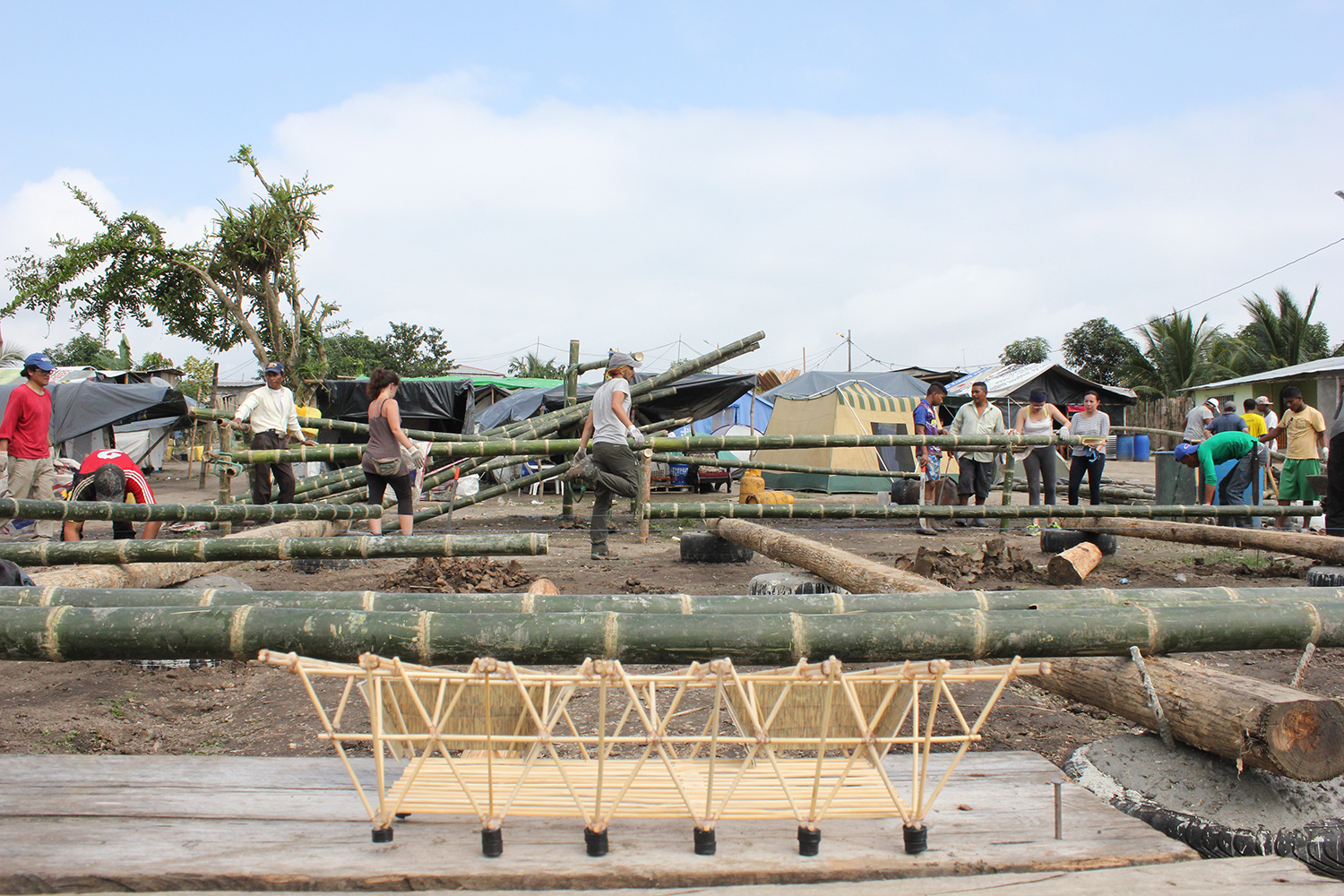
carla CHAVEZ et Carolina RODAS Ramaestudio
- Site : www.ramaestudioec.com
- Adresse : Francisco Hernandez de Giron N 35-66 y Av. República EC170134 Rumipamba
“Rama is an architecture studio, design, and construction that focuses on the optimization of resources through experimentation. This group is interested in processes that strengthen the design and production with coherence to the needs, the place, its memory, and the environment.
Scales of work, which range from the territory to the object, are related to achieve an integral vision that objectively responds to social, cultural, and spatial issues.
The studio has been invited to give lectures and workshops in different universities of Ecuador and has been awarded with the first national award in the Pan-American Biennial of Architecture of Quito (2014), in the category of rehabilitation and recycling. Our work has been published in different magazines and digital platforms, worldwide. Also, the studio has been selected nationally for the Ibero-American Biennial (BIAU), and as national representatives for the Biennial of Navarre - Spain.
Most of our works are linked to architectural pieces in disuse or change of use. Also, we see great potential in what is already done and that through time has taken a different way and deserves being reformed because we are interested in using what is already and adapting to the present time, to new users or needs.
A less invasive architecture that doesn’t start from scratch; with this vision, we have directed our response to spatial, social, and environmental problems. Each project has different priorities but has the same basis: OPTIMIZING resources. Starting from this idea, we have developed different constructive and furniture systems.”
|
Communal House renacer de chamanga
The proposal starts as an initiative of the Actuemos Ecuador macro collective, made up of 10 architecture collectives and independent professionals who came together as a result of the earthquake of April 16, 2016. With the aim of contributing to the reconstruction of the affected areas.
The area where the project is implemented corresponds to community land, previously donated to the neighborhood. The space housed 30 families with a total of 170 people.
I don't know
The area where the project is implemented corresponds to community land, previously donated to the neighborhood. The space housed 30 families with a total of 170 people
The project consists of developing a community center for Chamanga through participatory design and construction processes. Community workshops were held to understand and prioritize people's needs; these activities served as the basis for the design. It also allowed us an understanding of the local resources and existing labor at the hostel.
The project is proposed as a large roof that allows the activities planned by the community to be carried out.
For this, a guadua cane structure was assembled by means of simple joints
The structural configuration was given by two crossed reed planes that were structured to support the deck.
Teak logs were used in the floor structure, the same ones that are easily found in the area, donated by the same settlers.
|



